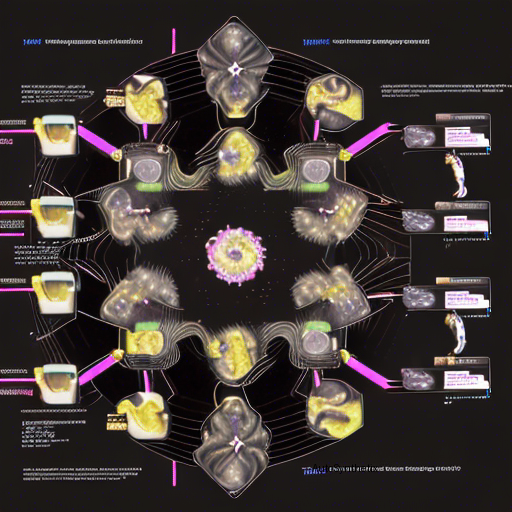Introduction: In the ever-evolving battle against pandemics like COVID-19, technological advancements have become indispensable tools in healthcare systems worldwide. This groundbreaking research showcases how cutting-edge Artificial Intelligence (AI), specifically EfficientNets combined with an Attention Mechanism, can revolutionize medical imaging diagnostics – taking us one significant stride forward towards more efficient, accurate disease identification methods.
Section 1: Inefficiencies in Traditional Methodologies & the Need for Automation Manually analyzing Computed Tomography (CT) chest scans for signs of respiratory illnesses such as COVID-19 places immense pressure upon frontline doctors. High caseloads coupled with multiple image sets per individual often lead to misdiagnoses or delays due to human fatigue factors. Consequently, there arises a pressing demand for automated solutions that could alleviate strain while maintaining diagnostic accuracy.
Section 2: Proposed Solution - Introducing the DEFAI-MIA Cov19D Challenge Participant Model This innovative approach aims at streamlining the process of identifying SARS-CoV-2 infection indicators within patients' CT scan data. By participating in DEF-AI-MIA COV19D, a specialized workshop dedicated to exploring Domain Adaptation, Explanation, and Fairness aspects in medical imagery analyses under pandemic circumstances, researchers put their novel model into practice. Their framework employs EfficientNet architecture infused with an Attentive system, alongside a crucial initial processing stage.
Section 3: Key Components of the Proposal - Unveiling the Power Couple of Deep Neural Network Designs Essential elements contributing significantly to the success of this project include:
a) **Domain Adaptation**: Enabling seamless transition between different datasets without compromising performance levels. In practical terms, this allows the model to analyze unfamiliar yet related data sources effectively.
b) **Explainability**: Providing transparency regarding decision-making processes, fosters trust among users who may not fully comprehend complex algorithms' inner workings. This aspect also facilitates continuous refinement based on feedback loops.
c) **Fairness**: Minimizing biases inherently present across various demographic groups during training ensures unbiased diagnosing irrespective of ethnicity, age, sex, etc., thus promoting equitable health services delivery globally.
d) **Pre-Processing**: An essential preparatory phase optimizes input data prior to feeding them into the neural network models, ultimately enhancing overall efficiency.
e) **EfficientNet + Attention Mechanisms**: Combining these two powerful components creates a potent toolset capable of handling large amounts of intricate visual data efficiently while capturing relevant context clues critical for precise classifications.
Conclusion: Reimagining a Post-Pandemic Future Through Advanced Technological Integration Throughout history, crises have catalyzed innovation; here too, we witness technology stepping up amidst unprecedented challenges posed by global outbreaks such as COVID-19. As demonstrated above, leveraging state-of-the art techniques like those employed in this study signifies a paradigm shift toward more resilient public health strategies equipped both practically and ethically to handle future threats swiftly, accurately, fairly, and compassionately. With continued investment in interdisciplinary collaborative efforts spanning computer science, medicine, statistics, amongst others, humanity stands poised to redefine its response capabilities when confronting similar adversities once again.
Source arXiv: http://arxiv.org/abs/2403.11505v1
